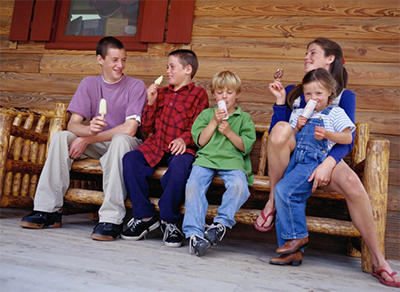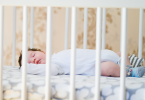People suffer heat-related illnesses when their bodies are unable to compensate and properly cool themselves. No matter if you’re in the garden, on the playing field, at the beach or at the construction site, summer activity should be balanced with measures that aid the body’s cooling mechanisms and prevent heat-related illness.
With the mercury already topping 100 degrees this week, I recommend these eight tips to beat the heat:
- Schedule outdoor activities strategically: If you must be outdoors, try to limit activity to early morning or early evening hours. Take breaks regularly in shady areas or indoors so that your body’s thermostat will have a chance to recover.
- Pace yourself: If you don’t frequently exercise or work in a hot climate, begin slowly and gradually increase the pace. Avoid overexertion. If activities in the heat make your heart pound and leave you gasping for breath, stop, move to a cool or shaded area and rest – especially if you become lightheaded, confused, weak or faint.
- Avoid direct sunlight: If you can, stay out of the sun. If you have to be outside, then be sure to apply sunscreen to reduce the heat absorbed and the moisture lost from the body. Additionally, wear lightweight, light-colored, loose-fitting clothing and a wide-brimmed hat that covers as much as the head as possible. If you work in the sun, be sure to take frequent breaks and don’t push yourself to hard.
- Drink plenty of fluids: It’s important to keep drinking water even when you are not thirsty. During heavy exercise in a hot environment, drink two to four glasses of cool fluids each hour. A sports beverage can replace the needed salt and minerals you lose in sweat.
- Swimming is not “hydrating:” Don’t make the mistake of thinking swimming will hydrate you. When you swim, you are exercising and, therefore, losing water and other nutrients. If heading to the pool, you’d be wise to take along plenty of bottled water.
- Avoid certain hot foods: Do not eat a heavy or hot meal before going outside in hot weather. This will heat your body faster, making you more vulnerable. Avoid liquids that contain alcohol or large amounts of sugar – these cause you to lose more body fluid. Also avoid extremely cold drinks, which can cause stomach cramps.
- Use a buddy system: During outside activities in hot weather, keep an eye on the conditions of your family, children, friends or co-workers. Make sure you have someone look out for you, too. If you are 65 or older, have a friend or relative call to check on you twice a day during a heat wave. Likewise, if you know someone in this age group, check on them frequently.
- Stay inside: If you don’t have to go outside, stay indoors in an air-conditioned environment. If your home has no air conditioning, find a public place that does. A few hours spent in air conditioning can help your body stay cooler when you return to the heat. Taking cool showers or baths is also a good way to keep your body temperature cool if you don’t have air conditioning. Also, avoid using your stove and oven as they can significantly raise the temperature in your home.
Heat exhaustion occurs when a person is overexposed to heat, resulting in loss of body water and salt. Symptoms include weakness, heavy sweating, nausea, giddiness, dizziness, collapse, fatigue and cool, clammy, red or flushed skin.
Those suffering from heat exhaustion should immediately go inside. Rest, drink cool beverages and take cool baths.
Heat stroke, the most severe heat-related illness, occurs when the body is unable to regulate its temperature. Temperatures may rise to 106 degrees Fahrenheit or higher within 10 to 15 minutes.
If you suspect someone has had a heat stroke, call 911 immediately.




